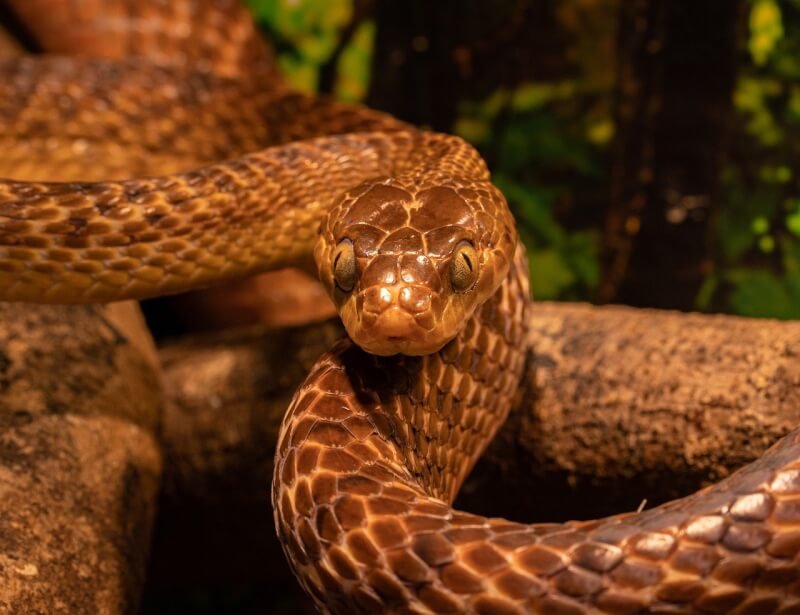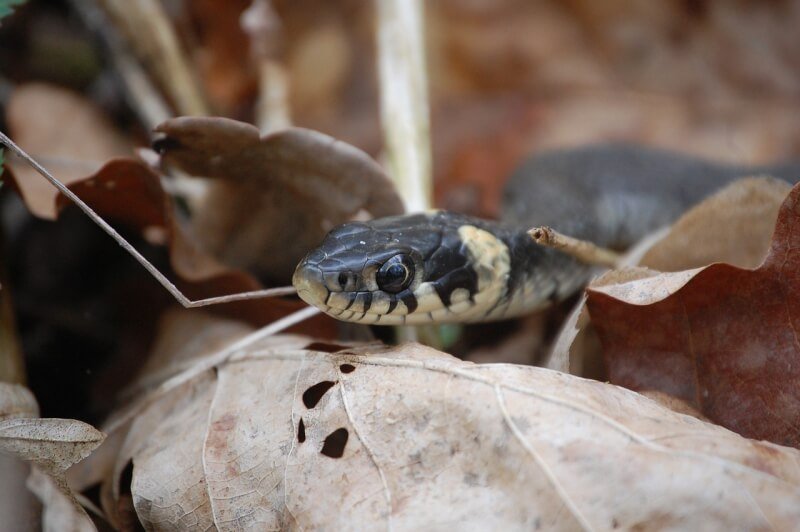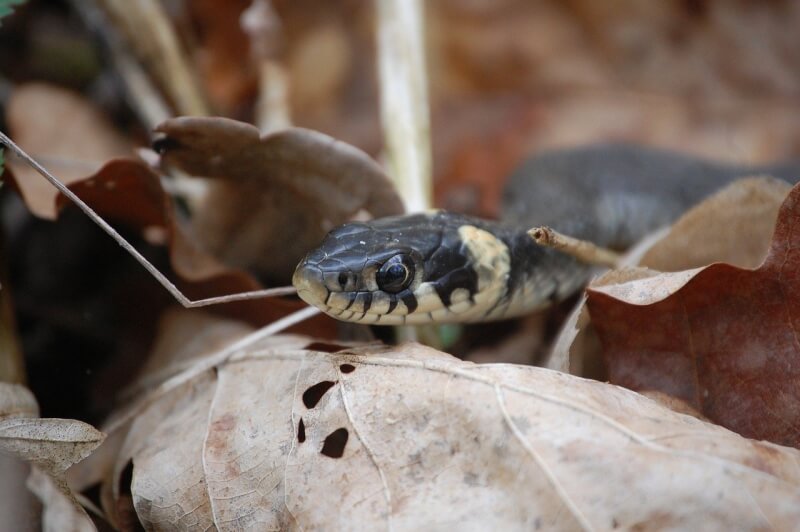Setting up a snake habitat can be an exciting endeavor, but it’s important to avoid common mistakes that can lead to discomfort and even harm for your scaly friend. From improper temperature settings to inadequate hiding spots, this article will guide you through the do’s and don’ts of creating a safe and comfortable environment for your snake. Whether you’re a first-time snake owner or an experienced reptile enthusiast, these tips and insights will help you provide the ideal habitat for your slithery companion.
Choosing the Wrong Size of Enclosure
Insufficient Space
One common mistake that snake owners make when setting up a habitat is choosing an enclosure that is too small for their snake. Snakes, depending on the species, can vary greatly in size and activity level. It is crucial to provide them with enough space to move around comfortably. A cramped enclosure can lead to stress, hinder natural behaviors, and even cause physical harm to the snake.
When selecting an enclosure, consider the adult size of your snake. Research the specific spatial requirements for the species you are keeping. Remember that snakes need enough room to stretch out, climb, and explore their environment. Providing ample space will contribute to the overall well-being and happiness of your pet.
Excessive Space
On the other hand, choosing an enclosure that is too large can also have negative consequences. When given too much space, some snakes can become stressed or anxious. They may have difficulty finding their hiding spots or feel exposed and vulnerable. Additionally, excessive space can make it more challenging to maintain proper temperature and humidity levels throughout the entire enclosure.
Strike a balance between providing enough space for your snake to move comfortably and ensuring they have areas for security and privacy. Consider the size of the snake’s natural habitat and try to replicate it as closely as possible within the confines of the enclosure.
Neglecting Proper Ventilation
Importance of Good Air Flow
Proper ventilation is essential in a snake enclosure to maintain optimal air quality. Without sufficient airflow, humidity levels can become imbalanced, leading to respiratory problems or skin issues for your snake. Stagnant air can also promote the growth of mold and bacteria, putting your pet’s health at risk.
Adequate ventilation helps remove stale air, prevent the buildup of odors, and circulate fresh air throughout the enclosure. It also assists in regulating temperature and preventing condensation on the walls. When designing your snake’s habitat, ensure that there are ventilation openings or breathable areas to promote healthy airflow.
Types of Ventilation Systems
There are various types of ventilation systems that can be used in a snake enclosure. One common method is the use of screen or mesh tops on the enclosure to allow air to flow freely. These screens can be easily removed for cleaning and maintenance.
Another option is incorporating ventilation fans or ductwork into the enclosure design. These systems can help improve air circulation, particularly in larger enclosures or in situations where natural ventilation may be limited.
When choosing a ventilation system, consider the specific needs of your snake species and the environmental conditions of your home. Consulting with a reptile expert or veterinarian can help you decide on the most appropriate ventilation setup for your snake’s habitat.

Inadequate Temperature Control
Lack of Temperature Gradient
Maintaining proper temperature gradients within a snake enclosure is vital for the health and well-being of your pet. Snakes are ectothermic, meaning they rely on external heat sources to regulate their body temperature. Without a proper temperature gradient, snakes may struggle to thermoregulate, which can impact their digestion, overall metabolism, and immune function.
To create a suitable temperature gradient, provide a range of temperatures within the enclosure. This includes a warm side, where the snake can bask and raise its body temperature, and a cooler side where it can retreat to lower temperatures. This allows the snake to move between temperature zones according to its needs.
Using a combination of heat sources such as heat mats, ceramic heaters, or heat lamps can help establish the desired temperature gradient. It is essential to monitor the temperatures regularly using accurate thermometers to ensure they are within the appropriate range for your specific snake species.
Improper Use of Heating and Cooling Devices
Another common mistake is the improper use of heating and cooling devices within the enclosure. Placing heat sources too close to the snake or providing inadequate heating can lead to discomfort or even burns. On the other hand, using cooling devices incorrectly or failing to provide sufficient cooling options can result in overheating and stress for the snake.
When using heating devices, ensure they are securely installed and positioned in a way that the snake cannot come into direct contact with them. Use thermostats or temperature controllers to regulate the heat sources and prevent overheating.
For cooling, consider incorporating hiding places or using airflow from fans or air conditioning to provide relief during hot periods. Ideally, create a microclimate within the enclosure that allows the snake to choose its preferred temperature zone.
Incorrect Humidity Levels
Effects of Low Humidity
Humidity is a crucial aspect of snake habitat, and maintaining the appropriate levels is essential for their overall health. Many snake species come from regions with specific humidity requirements, and failing to meet those needs can lead to dehydration, shedding problems, and respiratory issues.
If the humidity levels in your snake’s enclosure are too low, it can result in dry and irritated skin, difficulties in shedding, and respiratory infections. Snakes often rely on the ambient humidity to keep their skin hydrated, aiding the shedding process.
Effects of High Humidity
Conversely, excessive humidity in an enclosure can also cause problems. High humidity levels can promote the growth of mold and bacteria, leading to skin infections and respiratory ailments. Additionally, prolonged exposure to high humidity can negatively impact a snake’s immune system, making them more susceptible to diseases.
To ensure the correct humidity levels, research the specific requirements of your snake species. Use hygrometers to measure the humidity levels in the enclosure accurately. Provide adequate ventilation, sufficient water sources, and substrate choices that can help maintain the appropriate humidity range for your snake.

Using Substrates Inappropriate for the Snake Species
Unsafe Substrates
Choosing the appropriate substrate for your snake’s enclosure is essential for their health and safety. Certain substrates may pose risks to snakes, such as those that are sharp, dusty, or easily ingested. For example, substrates like pine shavings, cedar chips, or sand can cause respiratory issues, skin irritation, or intestinal blockages if ingested.
Research the ideal substrates for your specific snake species and avoid unsafe options. Coco fiber, reptile carpet, and paper towels are examples of substrates that are generally safe and easy to maintain. They provide a comfortable surface for the snake to move on while minimizing potential health risks.
Improper Substrate Depth
In addition to selecting the right substrate, it is vital to provide an appropriate depth within the enclosure. Snakes often like to burrow or hide under layers of substrate to feel secure and regulate their temperature. However, providing too shallow or too deep of a substrate layer can be problematic.
If the substrate is too shallow, the snake may not feel adequately hidden, leading to increased stress. Conversely, if the substrate layer is too deep, it can make it challenging for the snake to move around or create temperature gradients.
Research the natural habitat of your snake species to determine the appropriate depth for the substrate. Aim to replicate their natural environment as closely as possible to promote their overall well-being.
Choosing the Wrong Lighting Setup
Inadequate UVB Lighting
Proper lighting is essential for snakes, particularly those that require UVB exposure. UVB lighting helps snakes produce vitamin D3, which is crucial for calcium absorption and overall bone health. Without adequate UVB lighting, snakes can develop metabolic bone disease, leading to weakened bones and other health complications.
When selecting UVB lighting, ensure that it is appropriate for your snake species. Some snakes, particularly nocturnal species, may not require UVB lighting. However, most diurnal species like corn snakes or king snakes benefit from exposure to UVB light.
When implementing UVB lighting, pay attention to the distance between the light source and the snake, as well as the recommended duration of exposure. Regularly replace UVB bulbs according to the manufacturer’s instructions to ensure they are providing the required level of UVB radiation.
Excessive Photoperiod
While providing the correct amount of light is crucial, it is equally important to establish a proper photoperiod for your snake. Photoperiod refers to the duration of light and darkness cycles within a 24-hour period. Snakes, like other animals, rely on specific light and dark cycles to regulate their physiological processes and internal clocks.
Excessive exposure to light can disrupt natural behaviors, disrupt sleep patterns, and lead to stress or other health issues. Similarly, insufficient exposure to light can affect a snake’s overall well-being. It is important to replicate the natural light patterns of your snake’s native habitat to ensure proper physical and psychological development.
Research the specific light requirements of your snake species and provide the appropriate photoperiod by adjusting the number of hours the lights are on or off accordingly.

Ignoring the Importance of Hiding Places
Insufficient Number of Hiding Spots
Hiding places are crucial for snakes as they provide a sense of security, privacy, and opportunities for thermoregulation. Without sufficient hiding spots, snakes may become stressed, anxious, or display abnormal behaviors.
Ensure that your snake’s enclosure has an adequate number of hiding spots distributed throughout the habitat. This allows the snake to choose its preferred hiding place according to its comfort and temperature needs. Hiding spots can be in the form of reptile caves, hollowed logs, or even simple cardboard boxes with entrance holes.
Lack of Hides of Different Sizes
In addition to providing enough hiding spots, it is crucial to offer hides of various sizes. Snakes come in different sizes, and their hiding spots should reflect their growth and changing needs. A hide that is too small for a growing snake can cause stress, while a hide that is too large may not offer the desired security.
As your snake grows, observe whether the current hides still allow for a snug fit. If not, replace them with appropriately sized alternatives. This ensures that your snake always has an appropriate hiding spot available, promoting their well-being and reducing stress levels.
Improper Feeding Practices
Incorrect Feeding Schedule
Establishing a proper feeding schedule is essential for the well-being of your snake. Feeding too frequently or infrequently can have significant impacts on their digestion, metabolism, and overall health.
Research the specific dietary requirements of your snake species to determine the appropriate feeding schedule. Some snakes may require smaller, more frequent meals, while others have specific dietary needs and feeding intervals. Factors such as age, size, and activity level also contribute to determining the ideal feeding schedule.
In general, snakes should be fed a diet of appropriately sized prey items, having a prey-to-snake size ratio of approximately 1:1.5. A feeding schedule that mimics their natural hunting habits helps promote their physical and psychological well-being.
Inadequate Prey Size
Providing prey items that are either too small or too large for your snake can cause significant health problems. Offering prey that is too small may not provide the necessary nutrients, while prey that is too large can pose a choking hazard or cause digestive issues.
Research the appropriate prey size for your snake species and feed accordingly. As your snake grows, adjust the prey size accordingly to meet their changing nutritional needs. Regularly monitor the condition of your snake and their feeding response to ensure they are receiving an adequate and safe amount of food.

Neglecting Regular Cleaning and Maintenance
Not Cleaning the Enclosure Frequently Enough
Regular cleaning and maintenance are crucial to keep your snake’s habitat clean and hygienic. Neglecting proper cleaning routines can lead to the accumulation of waste, unpleasant odors, and increased risk of health issues such as respiratory infections or mites.
Establish a cleaning schedule that includes routine tasks such as removing waste, replacing water dishes, and spot cleaning any soiled areas. Additionally, perform regular deep cleanings of the entire enclosure, removing all substrate, disinfecting surfaces, and ensuring proper drying before adding fresh substrate.
By keeping the enclosure clean, you create a healthier environment for your snake, reducing the risk of pathogens and parasites that could compromise its health.
Improper Cleaning Products
While regular cleaning is essential, it is equally important to use appropriate cleaning products. Harsh chemicals, detergents, or disinfectants can be harmful to snakes, as they may leave residues or emit strong odors that can irritate their respiratory systems.
When selecting cleaning products, opt for those specifically designed for reptile enclosures. These products are formulated to be safe for reptiles while effectively eliminating bacteria, viruses, and parasites. Avoid using any products that contain ammonia, bleach, or strong fragrances.
Always read and follow the instructions provided by the manufacturer to ensure the safe use of cleaning products. Rinse all surfaces thoroughly after cleaning to remove any residue, and allow the enclosure to dry completely before introducing your snake back into its habitat.
Lack of Research on Snake Species
Failure to Understand Species-Specific Needs
One of the biggest mistakes you can make when setting up a snake habitat is not thoroughly researching the specific needs and requirements of your snake species. Snakes come from different regions, have various behaviors, and possess unique environmental preferences.
Taking the time to research and understand your snake species will allow you to create a habitat that closely resembles their natural environment. This includes considering factors such as temperature, humidity, lighting, and substrate preferences. Additionally, understanding their dietary needs, reproductive behaviors, and typical activity levels will help you provide a suitable and enriching environment.
Ignoring Behavioral and Environmental Requirements
Every snake species has its own unique behaviors and environmental requirements that must be considered to ensure their physical and mental well-being. Ignoring these specific needs can lead to stress, poor health, and a lower quality of life for your snake.
Research and understand the natural behaviors and environmental requirements of your snake species. Provide environmental enrichment such as branches for climbing, hiding spots for security, and suitable obstacles for exploration. Mimic their natural behaviors and activity patterns as closely as possible to create a stimulating and enriching habitat.
By meeting the behavioral and environmental needs of your snake, you can ensure they live a healthier, happier life in captivity.
In conclusion, setting up a snake habitat requires careful consideration of various factors to ensure the well-being of your pet. Avoiding common mistakes such as choosing the wrong enclosure size, neglecting proper ventilation, temperature control, and humidity levels, using inappropriate substrates or lighting setups, ignoring the importance of hiding places and cleanings, and failing to conduct thorough research on your specific snake species is crucial.
By understanding and addressing these potential pitfalls, you can create a suitable and enriching habitat that meets your snake’s specific needs. Providing an optimal environment will contribute to their overall health, happiness, and longevity in captivity. Remember, the more effort you put into setting up the habitat correctly, the better the quality of life your snake will have.



